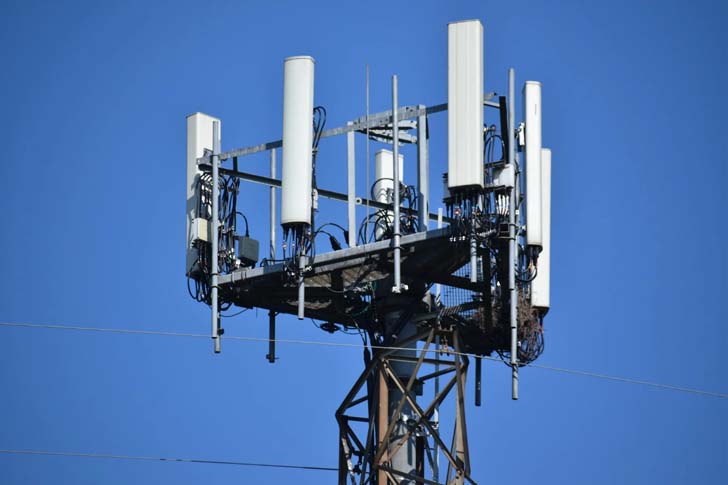Cell Tower Locations and 5G Coverage in My Area
As the world eagerly adapts to the advancements in mobile communications, the rollout of 5G networks has become a pivotal focus for both technology enthusiasts and the average consumer alike. The enhancement of mobile communication not only promises increased speed and connectivity but also paves the way for innovations in fields such as IoT, autonomous vehicles, and smart cities. This article dives deep into the nitty-gritty of cell tower locations and the state of 5G coverage, offering a clear vision of what to expect in various regions.

Understanding 5G Technology and Its Expansion
The fifth generation of telecom networks, or 5G, surpasses its predecessors in every aspect, offering lower latency, higher download and upload speeds, and more reliable connections. The technology operates on three spectrum bands: low-band spectrum offers wide coverage and deep penetration but lower speeds; mid-band spectrum provides faster speeds and lower latency but has limitations in coverage and building penetration; high-band spectrum delivers the fastest, gigabit speeds but has very short range and poor building penetration.
Current Deployment of 5G and Cell Tower Distribution
As of now, major telecom operators are aggressively upgrading their networks and installing new cell towers to support the 5G rollout. The distribution of these towers is pivotal, as they determine the network’s efficacy. Urban areas are typically the first to receive network upgrades, given their high population density and intense demand for the latest and fastest mobile technologies. For instance, cities like New York, Chicago, and San Francisco have seen an exponential increase in 5G coverage over the past year, largely attributed to the enhanced infrastructure and concentration of cell towers.
Telecommunication companies are utilizing existing towers while also building new ones to expand coverage areas. The Federal Communications Commission (FCC) is facilitating this by opening up more frequencies for mobile use and streamlining regulations for tower placement. Despite this progress, the deployment of 5G is not without its challenges, which include logistics, local regulations, and the physical geography of the area which can affect signal transmission.
5G Coverage Maps and Tools to Locate Cell Towers
To check the availability of 5G in your area, several tools and websites offer up-to-date information on cell tower locations and network coverage. Websites like OpenSignal, CellMapper, and Ookla’s Speedtest provide detailed 5G deployment maps, showing which carrier has 5G towers in specific areas. These resources can be invaluable for understanding not only the spread of 5G across different regions but also for determining the potential performance of the network in your locality.
Most telecom service providers also offer their own coverage maps on their websites. These maps are frequently updated to reflect new tower installations and network upgrades. Users can enter their address or zip code to see the type of coverage they can expect, whether it’s 4G LTE or 5G, and make informed decisions about which carrier might best meet their needs based on where they live, work, or travel.
Impact of Cell Tower Locations on Real Estate and Local Communities
The placement of cell towers has also begun to impact real estate values, with proximity to good mobile coverage becoming a unique selling point for properties. While some community members express concerns about aesthetics and the potential health effects of towers, the demand for improved mobile service generally outweighs these concerns. Additionally, local jobs and improvement in municipal services often follow the build-out of high-tech infrastructure, further encouraging community support for these projects.
Future Trends in 5G Deployment and Technology
Looking forward, the expansion of 5G is set to accelerate further. Innovations in mesh technology and small cells could solve the problem of high-band frequency’s short range and poor building penetration. Additionally, the integration of artificial intelligence in network management and continuous development in satellite technology may pave the way for more efficient network deployment and maintenance.
Furthermore, collaborative efforts between governments, technology providers, and telecommunication companies are crucial. These partnerships will be key to overcoming the remaining hurdles in 5G’s expansion, especially in rural and undeveloped regions where the digital divide is most pronounced. As these technologies and infrastructures evolve, we expect a significant transformation in how societies operate and how industries function.
Conclusion – Embracing the 5G Future
Despite various challenges, the transition to 5G represents a significant leap forward in technology that will ultimately create a more connected and efficient world. Understanding the specifics of cell tower distribution, and how it impacts coverage and everyday connectivity, is crucial for consumers navigating this new landscape. By leveraging available tools and staying informed on developments, individuals and businesses can make the most of what 5G has to offer, ensuring they are not left behind in the rapidly advancing digital age.







Recent Comments